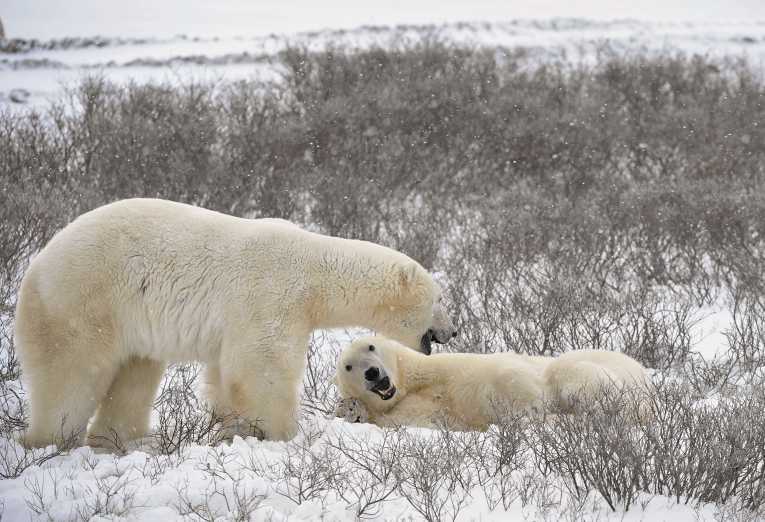Scientists working with bear DNA, both modern and ancient, have reconstructed a storied past for polar and brown bears. It's a narrative that has seen repeated migrations in the face of advancing and retreating ice, and a surprising number of couplings between the two distinct species. The evidence - published in today's Current Biology - even points to Britain and Ireland as the ultimate origin of the brown/polar bear coupling that produced the modern polar bear.
To track down the history of the polar bear's evolution - and the timing of those ancient liaisons -a large scientific team was assembled to pore over the a vast array of DNA data. 242 samples of mitochondrial DNA, from both brown and polar bears, were looked at. The samples included bears from the Kamchatka peninsula, in eastern Russia, throughout Europe, and onto North America and Alaska - and across over 120,000 years of history.
What the international team were looking for were similarities and differences in mitochondrial DNA. These genetic markers are passed down from mother's to their offspring, and are useful to biologists because they change only slowly from generation to generation. That means they can be used to work out how closely related different groups are to one another.
The group - led by Beth Shapiro, from Penn State University and Daniel Bradley of Trinity College, Dublin, Ireland - discovered that hybridization from polar bear and brown bear couplings were more common, and important, than previously thought. ''We found that brown bears and polar bears, which are hybridizing today in the wild, have been hybridizing opportunistically throughout the last 100,000 years and probably longer,'' said Shapiro.
Modern polar bears seem to be distinct from more ancient polar bears, the team now thinks - and descended from interbreeding with Irish or British bears, around about the time that the last Ice Age was gearing up - as much as 50,000 years ago. That differs significantly from what biologists had suggested before. Previous research had indicated that today's polar bears were descended from ancestors living on Alaskan islands just 14,000 years ago.
Whilst it might seem odd that the giant white polar bear would get so intimate with their brown bear cousins, it is something that is also being seen today. Shapiro believes that is because today's conditions - of a warming Arctic - are bringing the two species back into contact, just as seems to have happened often in the past.
''Interestingly, today we are seeing a similar change in the arctic climate, with melting glacial ice, fewer sea-ice days, longer open-water periods during summer, and rising sea levels,'' she said. ''And once again that change is providing polar and brown bears the opportunity to share habitats and to hybridize. In fact, several adult hybrid bears have been reported in the last five years.''
That means that arctic conservationists may need to throw their net wider, to include these hybrid polar bears in their plans. This new research is proving how important such cross-species intimacy is to the survival of the polar bear in the past, and so how critical it may in the future.
Top Image Credit: © UryadnikovS















